Last updated: May 16, 2025
Article
Commonly seen flowers at Scotts Bluff National Monument
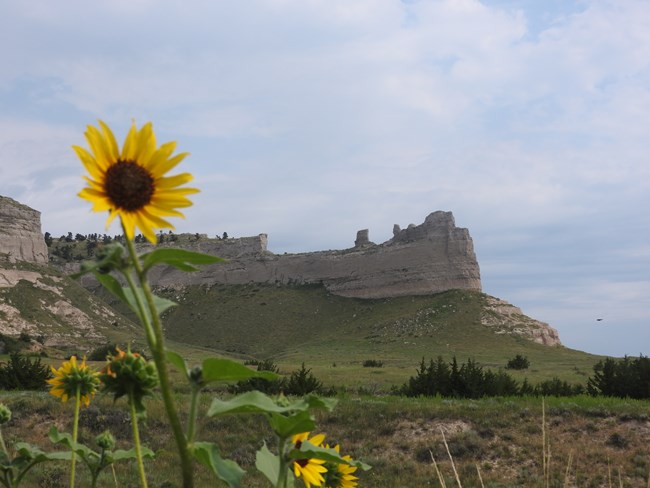
NPS/B Wagner
Common Sunflower
Helianthus annuus
Blooms from mid to late summer.
The sunflower we are familiar with is just one of 70 different species. Helianthus annuus is a naturally occurring sunflower to the area. It grows in bunches and is much smaller than the ones you may be familiar with.
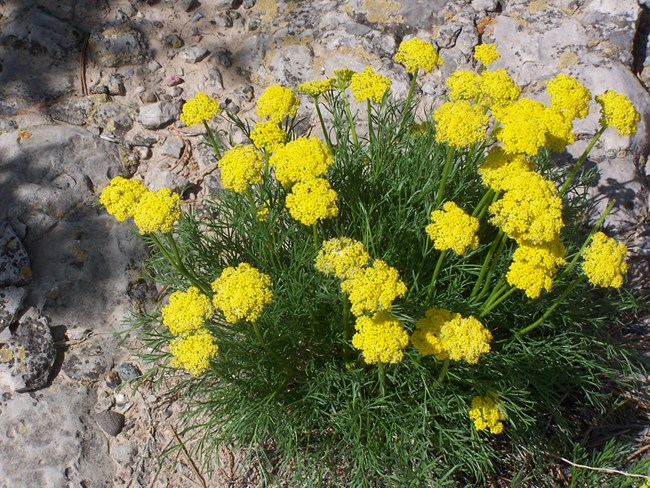
NPS image
Narrow-Leaved Musineon
Musineon tenuifoliumBlooms in early summer.
One of the first Flowers to bloom here at the monument. They can be spotted popping out of the rocks all around the bluff; as a sign that summer is fast approaching!
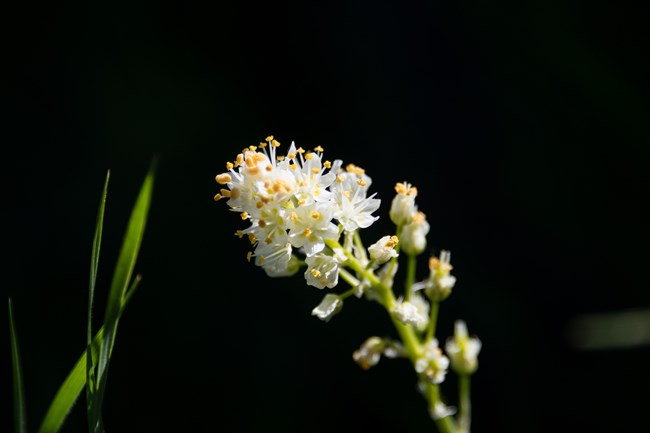
NPS image
Death Camas
Zigadenus venenosusTypically blooms from May to June
Not named for its flavor, all parts of the plant are poisonous. It is very dangerous for humans and animals alike. Consumption of even a small amount could be fatal.
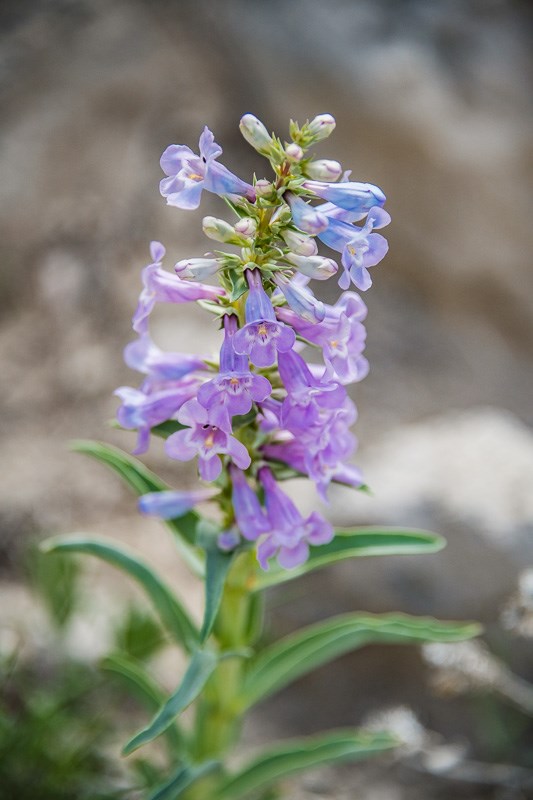
NPS image
Narrowleaf Penstemon
Penstemon angustifoliusBlooms around April to June
Its beautiful flowers attract a variety of native bees and butterflies. Penstemon is also know as beardtongues, which is a very large genus of approximately 250 species! So many types it might be hard to decide your favorite.
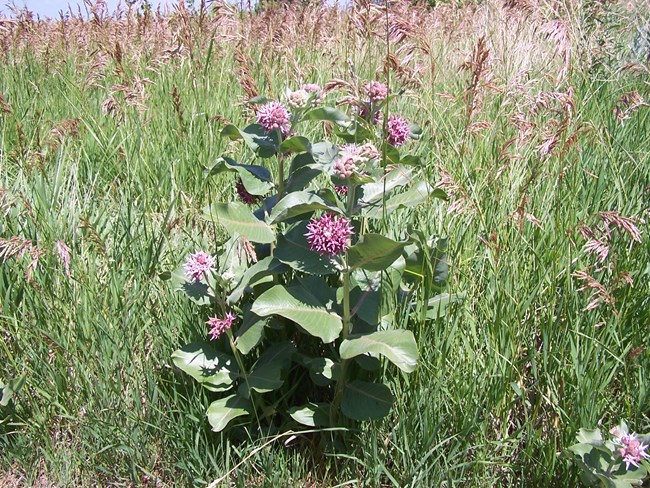
NPS image
Showy Milkweed
Asclepias speciosaNormally blooms from June to august.
Not only a beautiful flower but also famously a very important host plant for the caterpillars of monarch butterflies as well as many others.
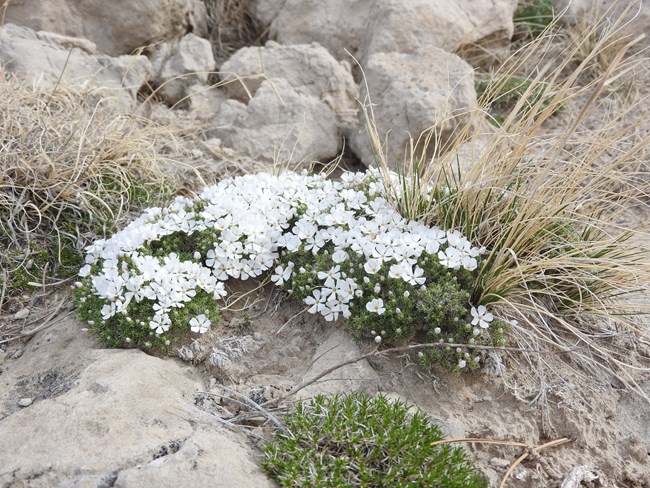
NPS image
Hood's Phlox
Phlox hoodiiTypically blooms from April to May.
Phlox can be found throughout North America in diverse range of habitats, everywhere from alpine to prairie to woodland. Their color can be as wide as their range from light blue to dark red. But around the bluff you probably just find the simple white Hood’s Phlox.
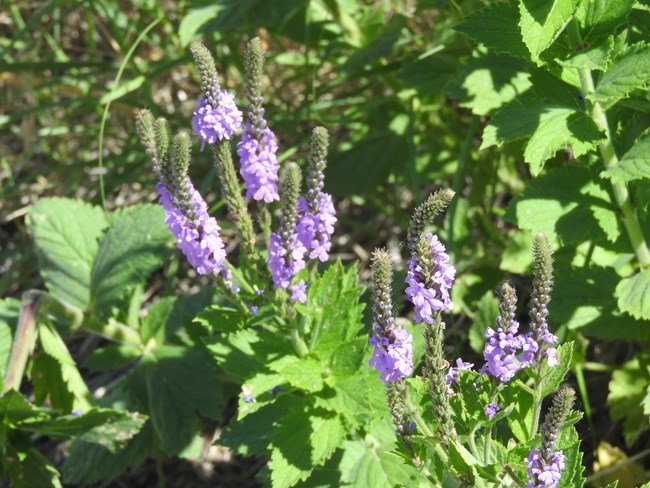
NPS image
Hoary Vervain
Verbena stricta
Blooms through most of the summer.
Hoary Vervain, also known as verbena, is in the family Verbenaceae. is a beautiful purple flower that starts blooming at the bottom of the flower and then blooms its way up.
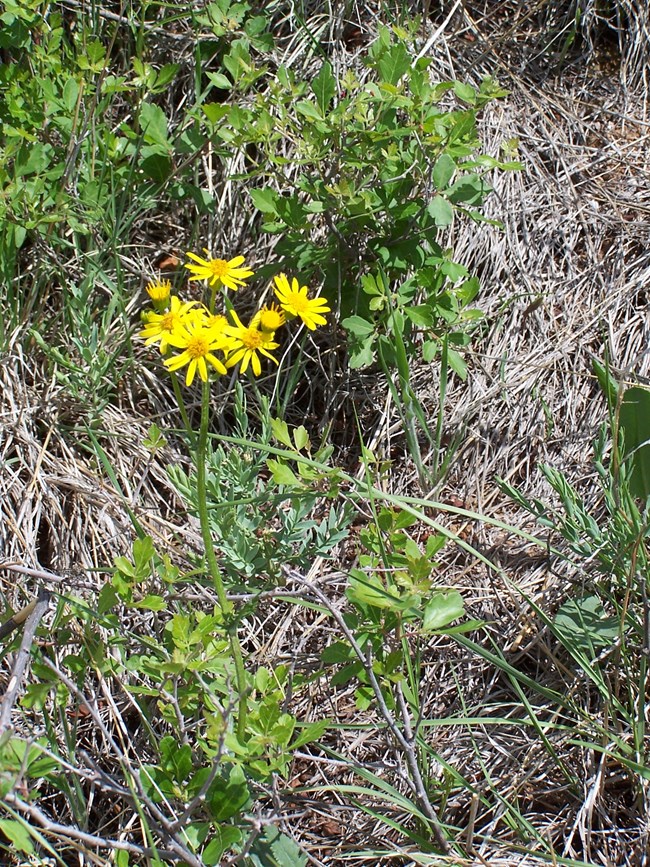
NPS image
Groundsel
Senecio sp.Typically blooms from April to June.
Groundsel are a species of flowering plant in the daisy family Asteraceae. There are many types of Groundsels throughout the world!
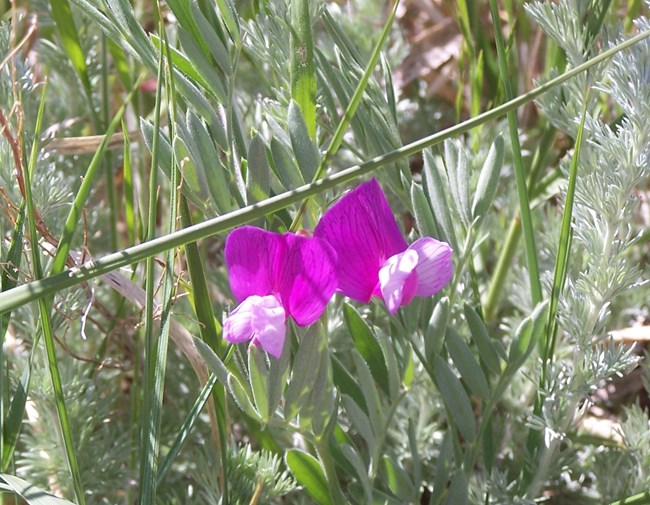
NPS image
Showy Peavine
Lathyrus polymorphus
Blooms in ealy summer.
The Showy peavine is a relatively small plant, growing three to six inches in height. Grows statewide with pink/violet flowers.Toxic to animals when eaten, can cause paralysis of limbs.
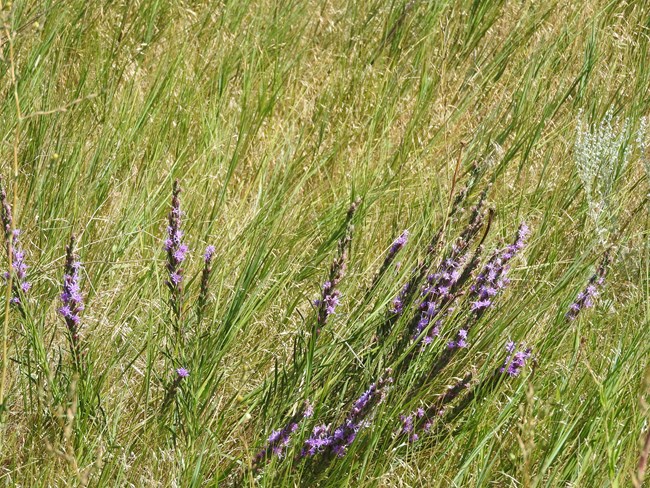
NPS image
Dotted Gayfeather
Liatris punctata
Blooms in late summer to early fall.
This drought tolerant plant can be crushed and made into a tea that can be used as a diuretic. Historically the root could be made into a powder and used as a poultice to reduce swelling of joints or injuries.
